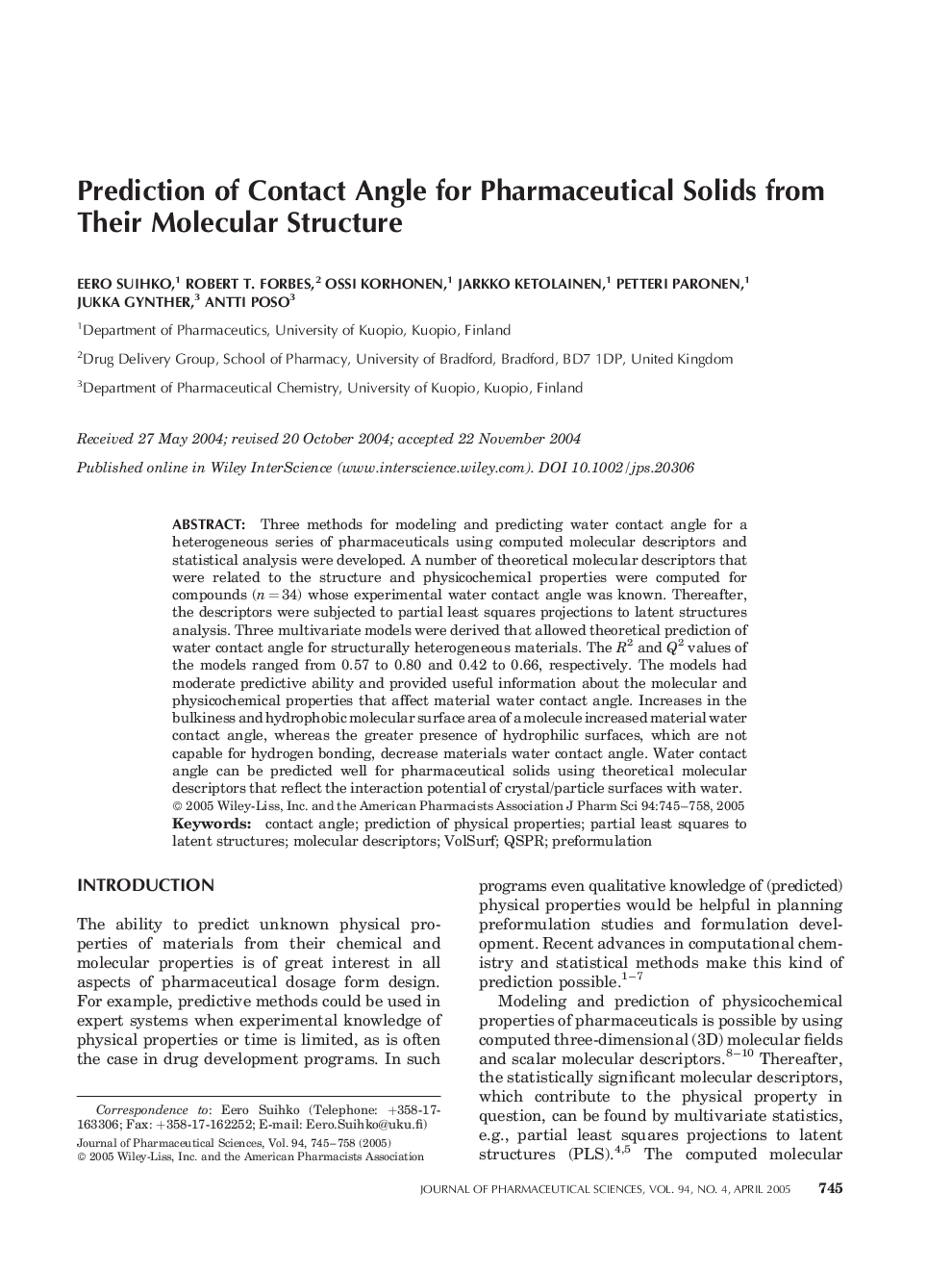| Article ID | Journal | Published Year | Pages | File Type |
|---|---|---|---|---|
| 8994950 | Journal of Pharmaceutical Sciences | 2005 | 14 Pages |
Abstract
Three methods for modeling and predicting water contact angle for a heterogeneous series of pharmaceuticals using computed molecular descriptors and statistical analysis were developed. A number of theoretical molecular descriptors that were related to the structure and physicochemical properties were computed for compounds (n = 34) whose experimental water contact angle was known. Thereafter, the descriptors were subjected to partial least squares projections to latent structures analysis. Three multivariate models were derived that allowed theoretical prediction of water contact angle for structurally heterogeneous materials. The R2 and Q2 values of the models ranged from 0.57 to 0.80 and 0.42 to 0.66, respectively. The models had moderate predictive ability and provided useful information about the molecular and physicochemical properties that affect material water contact angle. Increases in the bulkiness and hydrophobic molecular surface area of a molecule increased material water contact angle, whereas the greater presence of hydrophilic surfaces, which are not capable for hydrogen bonding, decrease materials water contact angle. Water contact angle can be predicted well for pharmaceutical solids using theoretical molecular descriptors that reflect the interaction potential of crystal/particle surfaces with water.
Related Topics
Health Sciences
Pharmacology, Toxicology and Pharmaceutical Science
Drug Discovery
Authors
Eero Suihko, Robert T. Forbes, Ossi Korhonen, Jarkko Ketolainen, Petteri Paronen, Jukka Gynther, Antti Poso,
